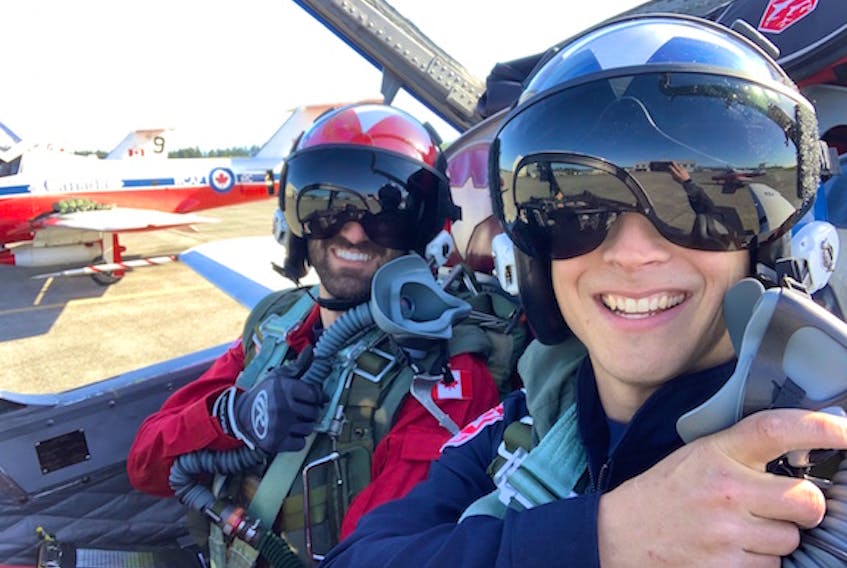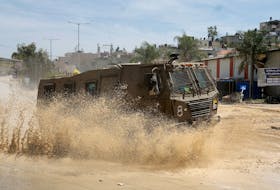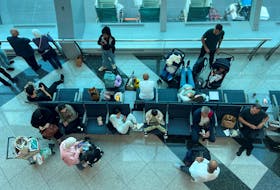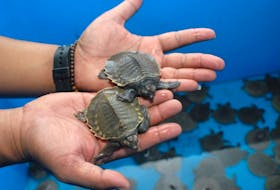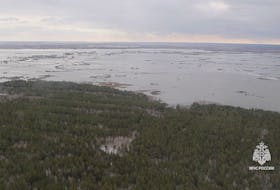So near... you could almost...
“I used to think they flew close. But I thought it was all just optics, like angles that made them look how close they fly,” Royal Canadian Air Force Cpl. Matthew MacKenzie said.
“I’ll never forget looking up at the plane beside me. I could count rivets. I could see every small detail.”
The Riversdale native was recounting his first flight in one of the famed Tutor jets of the Canadian Forces Snowbirds aerobatics team that soar and tumble through the skies in manoeuvres that leave spectators in awe-struck fascination.
“Like, these guys are extremely close to each other and they’re very skilful, these pilots. It’s incredible the manoeuvring they can do,” he said, by telephone from a performance stopover in North Carolina.
MacKenzie, 29, a Cobequid Educational Centre graduate and former member of the Truro-based Nova Scotia Highlanders Reserves, was nearing the end of a five-year contract with the Canadian Air Force last year when he was offered a posting with the Snowbirds in Moose Jaw, Sask.

Cpl. Matt MacKenzie
“I didn’t even hesitate. I said I would gladly do that and I signed a new contract.”
He joined the Snowbirds in February 2018 as an Aircraft Structures Technician, a role that has him travelling all over Canada and the United States from mid-April until late October.
He helps get planes ready by conducting inspections and making sure the aviation life support equipment – parachutes, seat packs (a survival kit they sit on in the event of an ejection) – and other gear is all in top-notch condition.
“We look after ejection seats, helmets and masks,” MacKenzie said. “These jets were all made in the ‘60s, so, it’s pretty old school. Like, metal-forming, riveting and stuff like that. We also do machining or finishing, including painting and sewing. And, of course, when we are on the road we’re ambassadors of Canada as well.”
Snowbird pilots fly solo during their performances but the planes are two seaters so MacKenzie and the other structures technicians ride along as they travel from show to show.
“We pretty much find every nook and cranny we can to put our tools and our personal kits. So, we pack pretty small for the year to make sure we can actually travel with our stuff.”
Flying in cramped conditions isn’t really all that bad, however, when it’s an aerobatic jet.
“Yeah, it’s pretty awesome,” he said. “So, I’m getting a lot more flying time than I ever imagined and anticipated.”
And while air sickness patches are now helping keep his stomach in check when g-force comes into play, MacKenzie chuckled as he recounted his first Snowbird experience during a special fly-over in Moose Jaw.
“It happened that first flight for sure,” he said – sudden air sickness.
Waiting to fly over the city, pilots practised manoeuvres involving a lot of pitching and rolling, creating both g-force and negative g-force effects.
“It’s like a wave essentially. Tilting the plane nose down while they’re pitching right. Then they’ll pull up, pitching right. Then they’ll turn and pitch left and go down,” he said. “And then, once they levelled out, it all hit. I was like, ‘oh God, here we go.'
“It’s normal for them and everything but, for me, it was like ‘okay this is enough’. It’s almost like you are stuck on a boat that is turning in every direction.”
The Debert Airport will serve as the site for a Snowbirds’ show this year and MacKenzie can’t wait. It's been two years since he was last home.
“I am ecstatic. To finally get to showcase the kind of things, that not just myself, but what our military is capable of, especially our pilots and mechanics and everything,” he said. “It’s really cool that we get to put a show on for my home crowd.
“I’ve been talking to a lot of my friends and family and they’re all very excited and they already bought tickets to come out and see what we do.”
The Snowbirds leave their base in Moose Jaw in mid-April for a three-week practice session in Comox, B.C. before setting off on a travel schedule that sees them perform across Canada and the U.S. each weekend and every Wednesday until Oct. 25.
“It’s a very, very long year, especially when you are sacrificing time away from your family, your pets, your friends, stuff like that,” he said. “It can be a pretty unpredictable career. But at the same time, you know, I got to see all of Canada serving with the forces.”
And, the adventure aspect “is really cool as well,” MacKenzie said.
Snowbirds in Debert
The skies over Debert will be filled with the death-defying aerobatics of the Canadian Forces Snowbirds the evening of June 19.
Wednesday evening performances are a big part of the Snowbirds' schedule and offer an opportunity to fly for smaller communities that don't host large weekend air shows.

